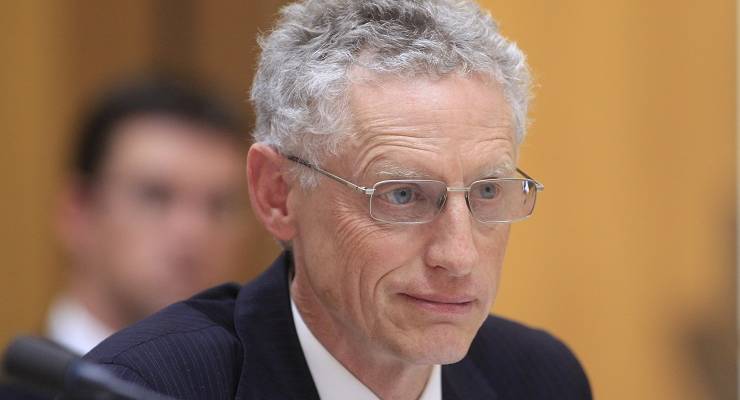
Last December, the Morrison government named Dr David Gruen as the Australian Statistician. It is turning out to be one of the better and most farsighted appointments this government and its predecessors have made.
Gruen was heavily tipped to lead the Australian Bureau of Statistics (ABS) back in 2014 but, amid rumours his appointment was nixed because Tony Abbott’s office thought he was too independent-minded, David Kalisch from the Department of Health and the Institute of Health and Welfare got the gig. Readers will best remember Kalisch from the colossal 2016 census debacle.
Gruen is one of the foremost economists in the country — in fact he is economics royalty. His father Fred was a well-known economist, specialising in agricultural economics. Brother Nicholas is a well-regarded private sector economist and analyst.
Instead of the ABS job, Gruen moved from Treasury, where he had been the head of the macroeconomics group, to the Department of the Prime Minister and Cabinet (PM&C). Before that, he was head of economic research at the Reserve Bank.
The ABS’ role in the current economic crisis is crucial: policymakers need as much, and as recent, economic data as it is possible to get. But the ABS traditionally deals with historical data.
Some of its series, like jobs and retail sales, are monthly and give us a sense of how the economy was travelling in the recent past.
Other major series, like national accounts and consumer price index, are quarterly, and often take so long to prepare that they tend only to tell us what things were like four or five months ago.
At the moment, four or five weeks is out of date. The world fundamentally changed in March and we’ve been struggling ever since to know exactly what’s happening in the economy.
Gruen’s response has been to start producing early data where he can. Last month the ABS produced early data on the impact of COVID-19 on retailing and hours worked as well as a survey. There was a separate report last Thursday with the March jobs data that looked at measuring the labour market impacts of COVID-19.
The ABS is overhauling its jobs data-gathering to make it more current and is considering ditching its trend series — the series it has been encouraging us to focus on in recent years — until a “new normal” is established.
This week the ABS starts three news series that will give us an earlier information of the impact of the COVID-19 virus on jobs, wages and the economy. First a Household Impacts of COVID-19 Survey based on a 1000-household survey, and then a Weekly Payroll Jobs and Wages in Australia. A second early or “flash” update on retail sales will be out on Wednesday and a mid-month update on the trade account will emerge on Thursday.
Given the March jobless figures released last week — which were only gathered until March 14 — told us little about the impact of the virus lockdowns, the Weekly Payroll Jobs and Wages in Australia may be very useful in revealing what’s happening with employment. It will provide “information on changes in total jobs and total wages paid, for all employing businesses who report through the Single Touch Payroll system to the Australian Taxation Office (approximately 99% of large and medium sized businesses, and around 70% of small businesses)” according to the ABS.
As a senior policymaker and economist in the RBA, Treasury and PM&C, Gruen will have a better understanding than virtually anyone else in the public service about how crucial it is to get the right data as the government navigates an unprecedented health and economic crisis. Now he’s in a position to deliver it.









How can the head of ABS be “too independent-minded”?
Presumably Tony Abbott wanted a fantasy writer who would align data with his personal reality – kind of like Trump supporting ‘experts’ in the USA.
Numbers don’t lie, people do.
The Rodent didn’t begin the trashing of the civil service with political appointees – thanks a bunch HawKeating – but brought it it to the appalling state we see today.
Once upon a time the Commonwealth Year book was a must-have – every conceivable stat. in logical format with a superb index.
It had the lot or references to more detailed stats. for fact tragics.
I don’t know if it still exists unless in the glitzy, flashy wildly deceptive volumes the ABS began publishing 20yrs – seemingly compiled by PR types to hide information.
Yeah cuchulain, it was the Howard govt who politicised the public sector. Hawke Keating got rid of John Stone, eventually, an arch conservative ideologue of very little brain, but nobody else. Howard got rid of 33 per cent of Dept heads on being elected.
Dem’s the facts, do with them what you can.
Your ideology is showing.
The Gruens are largely analytical gold. Nick I’m more aware of, was destined to be head of Treasury until some liberal party jack got the job.
The trashing of merit which continues under the ScoMo govt is a travesty.